Effects of Soundscape on Flow State during Diabolo Exercise
Abstract
:1. Introduction
2. Materials and Methods
2.1. Direct and Indirect Influence Model of Diabolo Soundscape Perception
2.2. Evaluating the Flow State
2.3. Control Experiment of Diabolo Soundscape Perception
2.3.1. Experimental Site
2.3.2. Experimental Subjects
2.3.3. Silent State Setting
2.3.4. Control of Environmental Background Noise
- What do you think is the dominant sound around during diabolo exercise?
- Do you think the noise of conversation, traffic, etc., around you will interfere with the sound of the diabolo?
2.3.5. Procedure
2.3.6. Data Analysis
3. Results
4. Discussion
4.1. Reasons for the Difference in Flow State between Sound and Silent States of Diabolo
4.1.1. Unambiguous Feedback
4.1.2. Sense of Control
4.1.3. Autotelic Experience
4.2. Mechanism of the Effect of Diabolo Soundscape Perception on Flow State
4.3. Limitations
5. Conclusions
- (1)
- To analyze the influence path of diabolo movement in terms of older adults’ psychological perception, a two-channel (direct and indirect) influence model of the effect of the diabolo soundscape on older adults’ psychological perception was constructed.
- (2)
- In the silent condition of diabolo movement, the multiple dimensions and total score of flow state were significantly lower than those in the sound condition (p < 0.05 and p < 0.001), and the three dimensions of unambiguous feedback, sense of control, and autotelic experience had the most important difference. The two-channel influence model can effectively explain the reasons for the differences in older adults’ flow state.
Author Contributions
Funding
Institutional Review Board Statement
Informed Consent Statement
Data Availability Statement
Acknowledgments
Conflicts of Interest
References
- Hao, Y.; Shao, Y. The Roles of Soundscape Approaches in Landscape Design. Landsc. Archit. Front. 2020, 8, 72–83. [Google Scholar] [CrossRef]
- Kull, R.C. Natural and urban soundscapes: The need for a multi-disciplinary approach. Acta Acust. United Acust. 2006, 92, 898–902. [Google Scholar] [CrossRef]
- Pijanowski, B.C.; Villanueva-Rivera, L.J.; Dumyahn, S.L.; Farina, A.; Krause, B.L.; Napoletano, B.M.; Gage, S.H.; Pieretti, N. Soundscape Ecology: The Science of Sound in the Landscape. BioScience 2011, 61, 203–216. [Google Scholar] [CrossRef] [Green Version]
- Cerwen, G. Urban soundscapes: A quasi-experiment in landscape architecture. Landsc. Res. 2016, 41, 481–494. [Google Scholar] [CrossRef]
- Aletta, F.; Oberman, T.; Kang, J. Associations between Positive Health-Related Effects and Soundscapes Perceptual Constructs: A Systematic Review. Int. J. Environ. Res. Public Health 2018, 15, 2392. [Google Scholar] [CrossRef] [PubMed] [Green Version]
- Zhang, D.X.; Kong, C.X.; Zhang, M.; Kang, J. Religious Belief-Related Factors Enhance the Impact of Soundscapes in Han Chinese Buddhist Temples on Mental Health. Front. Psychol. 2022, 12, 774689. [Google Scholar] [CrossRef]
- Medvedev, O.; Shepherd, D.; Hautus, M.J. The restorative potential of soundscapes: A physiological investigation. Appl. Acoust. 2015, 96, 20–26. [Google Scholar] [CrossRef]
- Zhu, X.; Gao, M.; Zhao, W.; Ge, T.J. Does the Presence of Birdsongs Improve Perceived Levels of Mental Restoration from Park Use? Experiments on Parkways of Harbin Sun Island in China. Int. J. Environ. Res. Public Health 2020, 17, 2271. [Google Scholar] [CrossRef] [Green Version]
- De Coensel, B.; Botteldooren, D. The quiet rural soundscape and how to characterize it. Acta Acust. United Acust. 2006, 92, 1681–1697. [Google Scholar] [CrossRef]
- Li, Y.L.; Cai, J.; Dong, Q.D.; Wu, L.J.; Chen, Q.B. Psychophysiological Responses of Young People to Soundscapes in Actual Rural and City Environments. J. Audio Eng. Soc. 2021, 68, 910–925. [Google Scholar] [CrossRef]
- Li, H.; Lau, S.K. A review of audio-visual interaction on soundscape assessment in urban built environments. Appl. Acoust. 2020, 166, 107372. [Google Scholar] [CrossRef]
- Erfanian, M.; Mitchell, A.J.; Kang, J.; Aletta, F. The Psychophysiological Implications of Soundscape: A Systematic Review of Empirical Literature and a Research Agenda. Int. J. Environ. Res. Public Health 2019, 16, 3533. [Google Scholar] [CrossRef] [PubMed] [Green Version]
- Kerrigan, F.; Larsen, G.; Korta, K. ‘Gimme shelter’: Experiencing pleasurable escape through the musicalisation of running. Mark. Theory 2014, 14, 147–166. [Google Scholar] [CrossRef] [Green Version]
- Saarikallio, S.; Erkkilä, J. The Role of Music in Adolescents’ Mood Regulation. Psychol. Music 2007, 35, 88–109. [Google Scholar] [CrossRef]
- Powis, B. Soundscape elicitation and visually impaired cricket: Using auditory methodology in sport and physical activity research. Qual. Res. Sport Exerc. Health 2019, 11, 35–45. [Google Scholar] [CrossRef]
- Lee, D.G.; Han, W.J. Noise levels at baseball stadiums and the spectators’ attitude to noise. Noise Health 2019, 21, 47–54. [Google Scholar] [CrossRef]
- Cranston, C.J.; Brazile, W.J.; Sandfort, D.R.; Gotshall, R.W. Occupational and Recreational Noise Exposure from Indoor Arena Hockey Games. J. Occup. Environ. Hyg. 2013, 10, 11–16. [Google Scholar] [CrossRef]
- Brown, A.L.; Kang, J.; Gjestland, T. Towards Standardization in Soundscape Preference Assessment. Appl. Acoust. 2011, 72, 387–392. [Google Scholar] [CrossRef]
- Davis, M.S.; Csikszentmihalyi, M. Beyond Boredom and Anxiety: The Experience of Play in Work and Games. Contemp. Sociol. 1977, 6, 197–199. [Google Scholar] [CrossRef]
- Jackson, S.A.; Marsh, H.W. Development and Validation of a Scale to Measure Optimal Experience: The Flow State Scale. J. Sport Exerc. Psychol. 1996, 18, 17–35. [Google Scholar] [CrossRef]
- Meggs, J.; Chen, M.A.; Koehn, S. Relationships Between Flow, Mental Toughness, and Subjective Performance Perception in Various Triathletes. Percept. Mot. Skills 2019, 126, 241–252. [Google Scholar] [CrossRef] [PubMed]
- Haworth, J. Skill-challenge relationships and psychological well-being in everyday life. Soc. Leis. 2013, 16, 115–128. [Google Scholar] [CrossRef]
- Jackson, S.A.; Roberts, G.C. Positive performance state of athletes: Towards a conceptual understanding of peak performance. Sport Psychol. 1992, 6, 156–171. [Google Scholar] [CrossRef]
- Ravizza, K. Peak experiences in sport. J. Humanist. Psychol. 1977, 17, 35–40. [Google Scholar] [CrossRef]
- Csikszentmihalyi, M. The Concept of Flow; Gardner Press Inc.: New York, NY, USA, 1979; pp. 17–36. [Google Scholar]
- Csikszentmihalyi, M.; Larson, R. Validity and reliability of the Experience-Sampling Method. J. Nerv. Ment. Dis. 1987, 175, 526–536. [Google Scholar] [CrossRef]
- Csikszentmihalyi, M. Flow: The Psychology of Optimal Experience; Harper& Row: New York, NY, USA, 1990; pp. 12–16. [Google Scholar]
- Jackson, S.A.; Eklund, R.C. Assessing flow in physical activity: The Flow State Scale-2 and Dispositional Flow State Scale-2. J. Sport Exerc. Psychol. 2002, 24, 133–150. [Google Scholar] [CrossRef]
- Jackson, S.A.; Martin, A.J.; Eklund, R.C. Long and short measures of flow: The construct validity of the FSS-2, DFS-2, and new brief counterparts. J. Sport Exerc. Psychol. 2008, 30, 561–587. [Google Scholar] [CrossRef] [Green Version]
- Liu, W. Revision on Chinese edition of the short flow state scale and the short dispositional flow scale. China Sport Sci. 2010, 30, 64–70. [Google Scholar] [CrossRef]
- Hellbrück, J. Towards Memory effects in loudness scaling of traffic noise—How overall loudness of short-term and long-term sounds depends on memory. Acoust. Sci. Technol. 2000, 21, 329–332. [Google Scholar] [CrossRef] [Green Version]
- Aucouturier, J.J.; Defreville, B.; Pachet, F. The bag-of-frames approach to audio pattern recognition: A sufficient model for urban soundscapes but not for polyphonic music. J. Acoust. Soc. Am. 2007, 122, 881–891. [Google Scholar] [CrossRef] [Green Version]
- Meng, Q.; Kang, J. Effect of sound-related activities on human behaviours and acoustic comfort in urban open spaces. Sci. Total Environ. 2016, 573, 481–493. [Google Scholar] [CrossRef] [PubMed] [Green Version]
- Caglar, E.; Sari, I.; Asci, F.H.; Eklund, R.C.; Jackson, S.A. Short Versions of Turkish Flow Scales for Athletes: Reliability and Validity Study. Studia Psychol. 2020, 62, 179–197. [Google Scholar] [CrossRef]
- Laukka, P.; Quick, L. Emotional and motivational uses of music in sports and exercise: A questionnaire study among athletes. Psychol. Music 2013, 41, 198–215. [Google Scholar] [CrossRef]
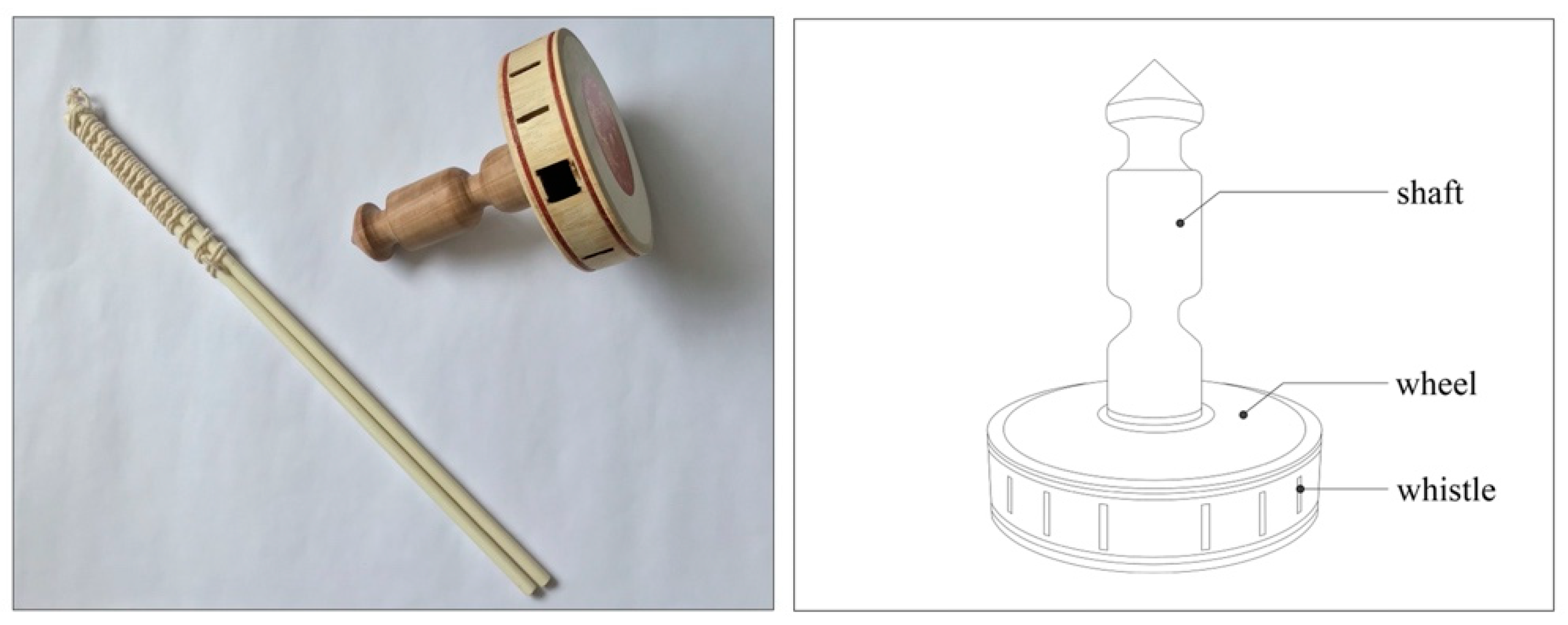
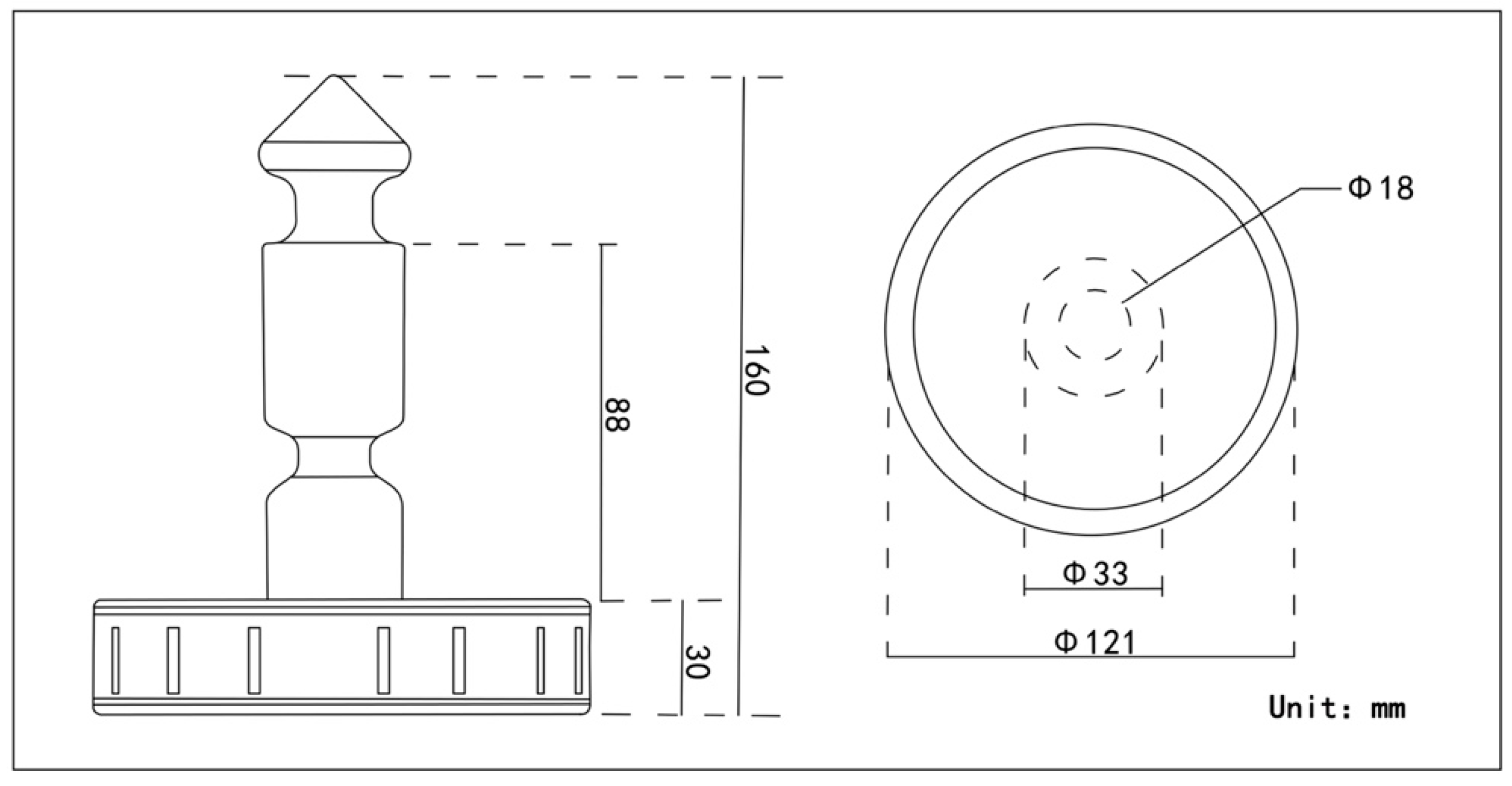
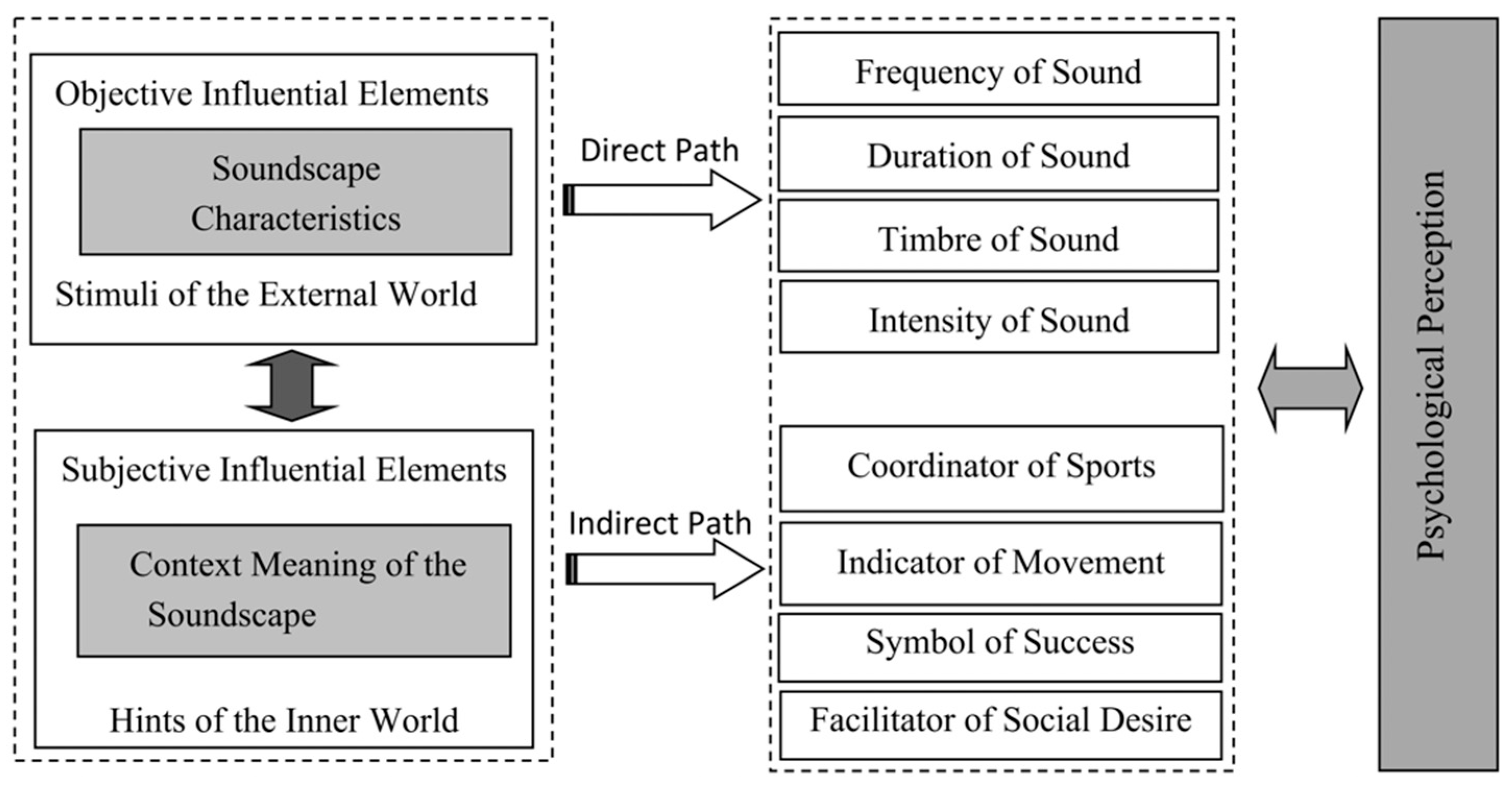
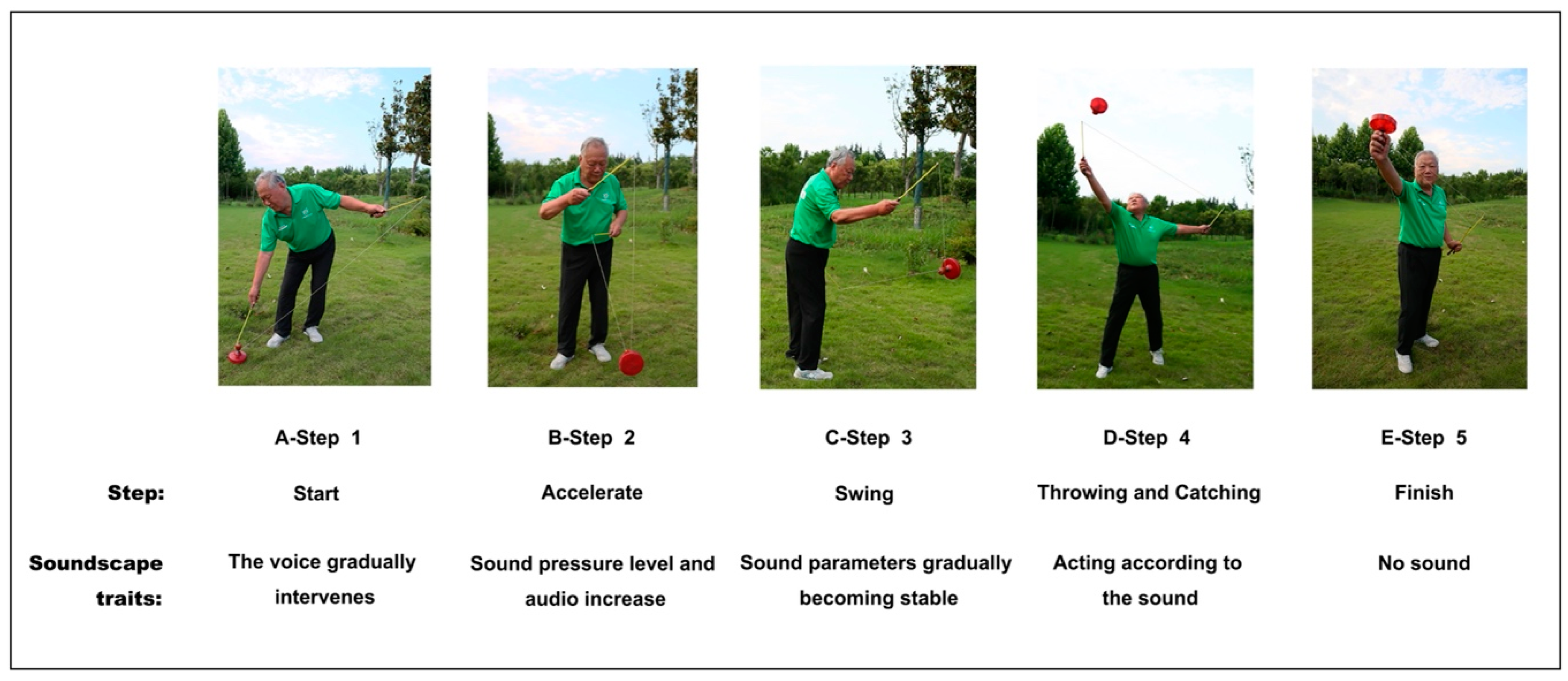
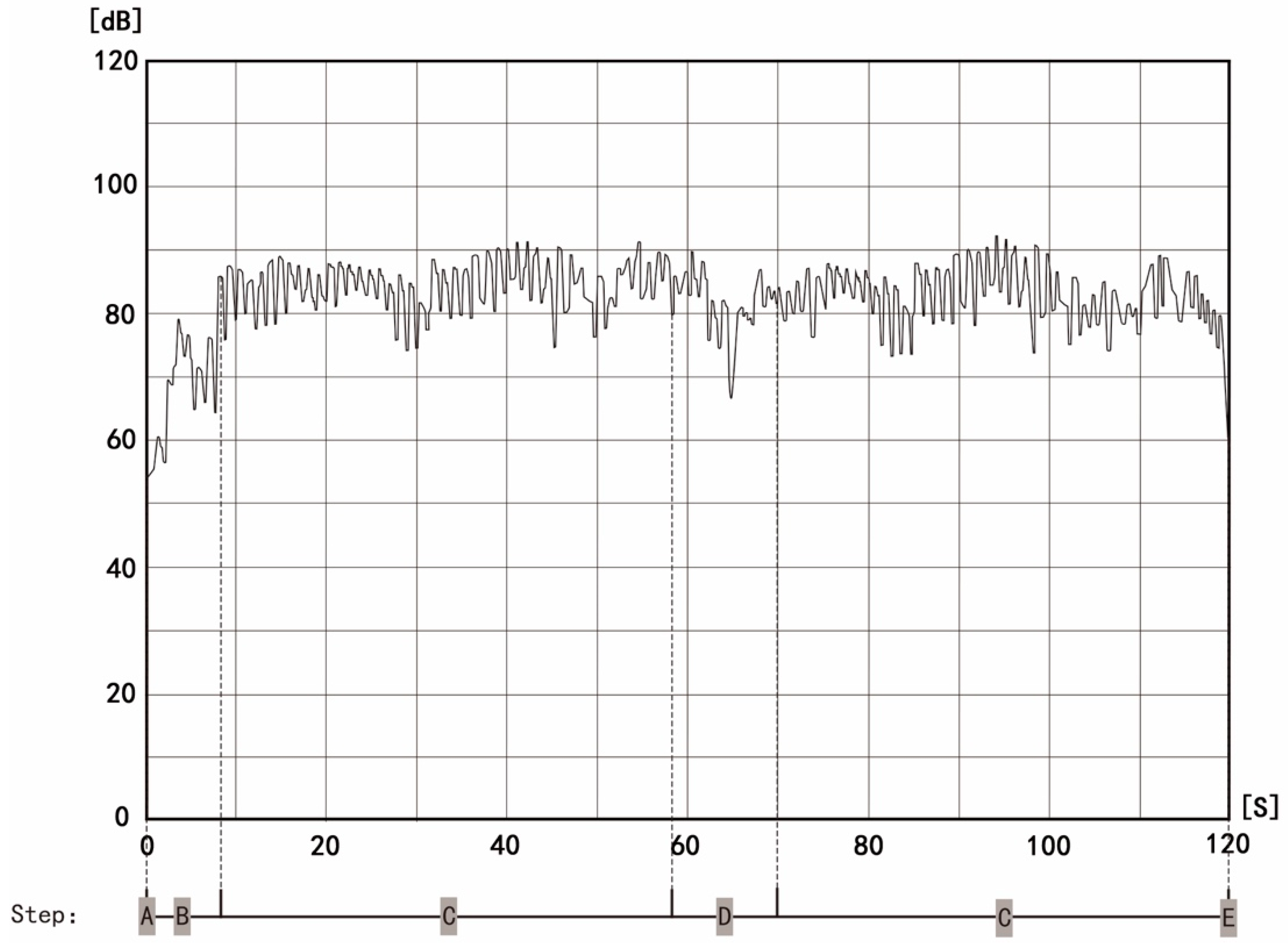

| Flow State Dimension | Definition of Dimension | Contents |
|---|---|---|
| 1. Challenge–Skill Balance | In flow, people perceive a balance between the challenges of a situation and their skills, with both operating at a personally high level. | Playing diabolo is difficult, but I can do it very well. |
| 2. Action–Awareness Merging | People are able to attain their intended state as much as possible. | I did all kinds of diabolo techniques without thinking. |
| 3. Clear Goals | Activity goals are well-defined (either set in advance or developed from being involved in the activity), giving people in flow a strong sense of what they are going to do. | I knew exactly what I was going to do. |
| 4. Unambiguous Feedback | In flow state, immediate, clear feedback is received, usually from the activity itself, allowing people to know they are succeeding in the planned goal. | I knew how well I just played. |
| 5. Concentration on Task at Hand | People’s focus is complete and clear when experiencing flow state, without any extraneous thoughts distracting them from the task at hand. | When I was playing diabolo, I was completely focused on that. |
| 6. Sense of Control | People experience a sense of exerting control without actively trying. | I felt completely in control of all the technical moves I was doing. |
| 7. Loss of Self-Consciousness | In flow state, people are completely involved in the activity they are engaged in, becoming part of the action and not caring about success or the values and judgments of others. | I did not care about success or the values and judgments of others. |
| 8. Transformation of Time | In flow state, time is perceptibly altered, sometimes fast and sometimes slow. | I felt like time kept altering, sometimes fast and sometimes slow. |
| 9. Autotelic Experience | An autotelic experience is an intrinsically rewarding experience. | I really enjoyed the experience of playing diabolo. |
| Paired Number | Flow State Dimension | Mean | Standard Deviation | Mean Difference | Cohen’s d | t | p |
|---|---|---|---|---|---|---|---|
| 1 | Challenge–skill balance | 0.37 | 0.674 | 5.309 | <0.001 | ||
| Sound | 3.63 | 0.81 | |||||
| Silent | 3.26 | 0.85 | |||||
| 2 | Action–awareness merging | 0.10 | 0.277 | 2.185 | <0.05 | ||
| Sound | 3.13 | 1.31 | |||||
| Silent | 3.03 | 1.20 | |||||
| 3 | Clear goals | 0.58 | 0.725 | 5.711 | <0.001 | ||
| Sound | 3.89 | 1.07 | |||||
| Silent | 3.31 | 1.29 | |||||
| 4 | Unambiguous feedback | 2.71 | 4.252 | 33.479 | <0.001 | ||
| Sound | 4.61 | 0.49 | |||||
| Silent | 1.90 | 0.30 | |||||
| 5 | Concentration on task at hand | 0.84 | 0.770 | 6.062 | <0.001 | ||
| Sound | 4.79 | 0.41 | |||||
| Silent | 3.95 | 1.00 | |||||
| 6 | Sense of control | 1.45 | 1.763 | 13.882 | <0.001 | ||
| Sound | 3.90 | 0.84 | |||||
| Silent | 2.45 | 0.62 | |||||
| 7 | Loss of self-consciousness | 0.02 | 0.127 | 1.000 | >0.05 | ||
| Sound | 3.31 | 1.21 | |||||
| Silent | 3.29 | 1.19 | |||||
| 8 | Transformation of time | 0.50 | 0.745 | 5.864 | <0.001 | ||
| Sound | 2.95 | 1.52 | |||||
| Silent | 2.45 | 1.31 | |||||
| 9 | Autotelic experience | 3.53 | 7.022 | 55.291 | <0.001 | ||
| Sound | 4.90 | 0.30 | |||||
| Silent | 1.37 | 0.49 | |||||
| 10 | Total flow state score | 10.10 | 4.426 | 34.852 | <0.001 | ||
| Sound | 35.11 | 5.03 | |||||
| Silent | 25.02 | 5.02 |
Publisher’s Note: MDPI stays neutral with regard to jurisdictional claims in published maps and institutional affiliations. |
© 2022 by the authors. Licensee MDPI, Basel, Switzerland. This article is an open access article distributed under the terms and conditions of the Creative Commons Attribution (CC BY) license (https://creativecommons.org/licenses/by/4.0/).
Share and Cite
Li, T.-Y.; Guo, S.-Y.; Xue, B.-X.; Meng, Q.; Jiang, B.; Xu, X.-X.; Chang, C.-C. Effects of Soundscape on Flow State during Diabolo Exercise. Int. J. Environ. Res. Public Health 2022, 19, 8034. https://doi.org/10.3390/ijerph19138034
Li T-Y, Guo S-Y, Xue B-X, Meng Q, Jiang B, Xu X-X, Chang C-C. Effects of Soundscape on Flow State during Diabolo Exercise. International Journal of Environmental Research and Public Health. 2022; 19(13):8034. https://doi.org/10.3390/ijerph19138034
Chicago/Turabian StyleLi, Tong-Yu, Si-Yuan Guo, Bin-Xia Xue, Qi Meng, Bo Jiang, Xin-Xin Xu, and Chein-Chi Chang. 2022. "Effects of Soundscape on Flow State during Diabolo Exercise" International Journal of Environmental Research and Public Health 19, no. 13: 8034. https://doi.org/10.3390/ijerph19138034
APA StyleLi, T.-Y., Guo, S.-Y., Xue, B.-X., Meng, Q., Jiang, B., Xu, X.-X., & Chang, C.-C. (2022). Effects of Soundscape on Flow State during Diabolo Exercise. International Journal of Environmental Research and Public Health, 19(13), 8034. https://doi.org/10.3390/ijerph19138034







